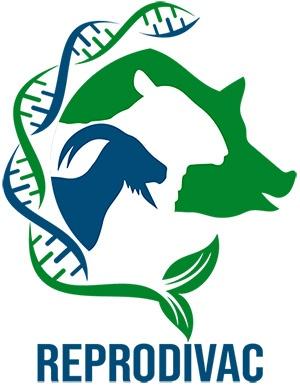REPRODIVAC - Next-generation vaccines and diagnostics to prevent livestock reproductive diseases of worldwide impact
University of Murcia
Research group microbian pathogens of UMU
Reference group in Chlamydiosis of small ruminants research using mouse experimental models to study of immunopathology of the OVINE ENZOOTIC ABORTION (OEA)
In the last years, this group has participated in more than 20 research projects with companies in the agricultural, pharmaceutical or public administration sectors, which allowed the group to transfer its knowledge (I+D+I)
We are also belonging to the transference group ONE HEALTH: GLOBAL AND ANIMAL HEALTH of the University of Murcia (UMU).
Members of the group:
- Jesús Salinas Lorente
- Nieves Ortega Hernández
- Laura del Río Alonso
- Antonio J. Buendia
- Maria Rosa Caro Vergara (Head Res.)
Main research:
Diagnosis of Abortive Processes in Small Ruminants
Validation And Development Of New Inactivated Vaccines Against Ovine Enzootic Abortion (Oea)
We Offer Advice To Livestock Farms In The Diagnosis And Control Of Abortions
By Infectious Agents Such As Chlamydia, Coxiella Or Salmonella,
Particularly In Sheep Enzootic Abortion (EOA) Caused By Chlamydia Abortus
Experience:
We have been working in this line for more than 25 years, we have been the beneficiaries of 7 projects financed with national or European public funds.
We have an national and international scientific production and we have collaborated with important pharmaceutical companies for the development of new vaccines against AEO, such as the INMEVA vaccine, recently marketed by HIPRA.
Other lines of work: development of public health surveillance programs of emerging and re-emergingpathogens:
We offer advice to public administrations and private companies to design and develop surveillance and health surveillance and sanitary control programs of emerging and re-emerging zoonotic agents as a preventive and re-emerging zoonotic agents as a measure to prevent possible health alerts or public health risks.
Zoonotic agents susceptible to be included in a Surveillance Plan: Pathotypes E. coli shigatoxigenic (STEC), enteroaggregative (EAEC) and invasive adherent (AIEC) pathotypes.
Borrelia burgdorferi (Sensus lato), Mycobacterium spp., Coxiella burnetti, Rickettsia spp.
We have been working for more than 10 years in diagnostics and sanitary surveillance with the Food Safety and Zoonosis Service of the Ministry of Health of the Region of Murcia.
Methodology used:
Laboratory techniques used: microbial isolations, biochemical identification,differential staining, molecular biology techniques (classical PCR and RT-qPCR), antibiograms, and serological tests such as ELISA and IF.
Isolation by cell culture, microbiological culture media, as well and murine experimental models.
REPRODIVAC has received funding from the European Union’s Horizon Europe research and innovation programme under Grant Agreement No. 101060813. Views and opinions expressed are however those of the author(s) only and do not necessarily reflect those of the European Union or other granting authorities. Neither the European Union nor the other granting authorities can be held responsible for them.

REPRODIVAC has received funding from the European Union’s Horizon Europe research and innovation programme under Grant Agreement No. 101060813. Views and opinions expressed are however those of the author(s) only and do not necessarily reflect those of the European Union or other granting authorities. Neither the European Union nor the other granting authorities can be held responsible for them.


